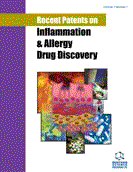Abstract
The skin is an organ most often affected by adverse drug reactions. Because of limited reactivity of the skin, different drugs may induce the same reactions on the skin, even if the same drug may induce different adverse drug reactions. Many of these adverse drug reactions do not include immunological mechanisms, most of them are nonimmunological processes. Adverse drug reactions which involve an immune system, may appear different times after drug administration. The severity of reactions is not dependent on the time at which adverse drug reaction appeared, even if some life threatening adverse drug reactions appear immediately after a drug administration. Four types of immunological reactions, (according to Cooms and Gell), may be involved in a drug adverse reaction. The first type of reaction (anaphylactic reaction) begins early after drug administration and different severities of the reactions could exist. The second type, known as cytotoxic hypersensitivity, begins after some minutes to a few hours after a drug administration. Third and fourth types of immunoogical reactions begin usually hours to days after drug administration. Some types of immunological reactions may begin days to weeks after drug administration. Sensitization to the drugs must be happen early, since re-exposition to the drug leads to the adverse drug reactions. The way of sensitization sometimes determines which immune mechanism will be involved and which clinical reaction will appear. Tests in vivo and in vitro can be used in the diagnosis of adverse drug reactions. All these tests are more or less limited to a false positive or false negative reaction and possibilities of serious reactions in tests. Provocations tests give the most satisfactory results but they may be dangerous and life threatening. We must carefully choose the skin tests and apply them according to the suspected pathomechanism of adverse drug reaction geneses and estimate the usefulness and the risks of the tests. Serious adverse drug reactions (i.e. Sy Steven-Johnson, lupus-like disease etc.) should not be tested. Some novel patents will have important implications in administration, diagnosis, and prevention of adverse drug reactions.
Keywords: Drug hypersensitivity, immune mechanisms, the skin, diagnosis, therapy
 30
30


















